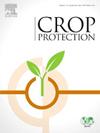分析用于识别马铃薯田杂草的深度卷积神经网络模型的性能
IF 2.5
2区 农林科学
Q1 AGRONOMY
引用次数: 0
摘要
杂草与农作物争夺水分、养分和阳光等重要资源,给农业带来了重大而根本的挑战。这种竞争往往会导致作物减产和产品质量下降。此外,杂草还可能寄生病虫害,进一步危害农作物,增加虫害风险,降低农业生产率。通过深度学习准确识别杂草提供了一种解决方案,使农民能够针对具体地点喷洒除草剂,从而降低除草剂用量,最大限度地减少对环境的影响。本研究介绍了一个基准作物和杂草分类数据集,并评估了用于杂草识别的七种最先进的深度学习模型。该数据集来自印度旁遮普省连续两个生长季节(2022 年和 2023 年)的马铃薯田。七个深度学习模型:卷积神经网络(CNN)-11、CNN-14、Inceptionv3、AlexNet、VGG16、ResNet50 和 YOLOv8 在该数据集上进行了马铃薯和杂草分类的训练和测试。在这些模型中,YOLOv8 表现最出色,在使用 3,750 万个参数的情况下,准确率达到了 100%。定制的 CNN-11 模型尽管参数最少(220 万个),但准确率却达到了 52%,适合资源有限的环境。采用残差网络的 ResNet50 也表现出卓越的性能,准确率达到 99%,参数数量适中(2,300 万个),这在资源有限的环境中或在边缘设备上部署模型时是一个重要的考虑因素。这些发现将指导研究人员和从业人员选择最佳模型,以减少除草剂的使用,最大限度地减少对环境的影响,并加强精准农业实践。最终,这项研究将推进杂草管理策略,支持可持续作物管理并提高农业生产率。本文章由计算机程序翻译,如有差异,请以英文原文为准。
Analyzing the performance of deep convolutional neural network models for weed identification in potato fields
Weeds pose a significant and fundamental challenge in agriculture, competing with crops for vital resources such as water, nutrients, and sunlight. This competition often leads to reduced crop yields and diminished quality of produce. Additionally, weeds can host pests and diseases that further harm crops, increasing the risk of infestation and reducing farm productivity. Accurate weed identification through deep learning offers a solution, enabling farmers to implement site-specific herbicide spraying, thus lowering herbicide usage and minimizing environmental impact. This study introduces a benchmark crop and weed classification dataset and evaluates seven state-of-the-art deep-learning models for weed identification. The dataset was obtained from potato fields in Punjab, India, over two consecutive growth seasons (2022 and 2023). Seven deep learning models, Convolution Neural Network (CNN)-11, CNN-14, Inceptionv3, AlexNet, VGG16, ResNet50, and the YOLOv8 were trained and tested on this dataset for potato and weed classification. Among these models, YOLOv8 emerges as the top performer, achieving flawless accuracy of 100% with 37.5 million parameters. The custom CNN-11 model, despite having the fewest parameters (2.2 million), achieves 52% accuracy, making it suitable for resource-constrained environments. ResNet50, with its residual networks, also demonstrates exceptional performance with 99% accuracy and a moderate number of parameters (23 million), which can be a significant consideration in environments with limited resources or when deploying models on edge devices. These findings guide researchers and practitioners in selecting optimal models to reduce herbicide usage, minimize environmental impact, and enhance precision agriculture practices. Ultimately, this study advances weed management strategies, supporting sustainable crop management and improving agricultural productivity.
求助全文
通过发布文献求助,成功后即可免费获取论文全文。
去求助
来源期刊

Crop Protection
农林科学-农艺学
CiteScore
6.10
自引率
3.60%
发文量
200
审稿时长
29 days
期刊介绍:
The Editors of Crop Protection especially welcome papers describing an interdisciplinary approach showing how different control strategies can be integrated into practical pest management programs, covering high and low input agricultural systems worldwide. Crop Protection particularly emphasizes the practical aspects of control in the field and for protected crops, and includes work which may lead in the near future to more effective control. The journal does not duplicate the many existing excellent biological science journals, which deal mainly with the more fundamental aspects of plant pathology, applied zoology and weed science. Crop Protection covers all practical aspects of pest, disease and weed control, including the following topics:
-Abiotic damage-
Agronomic control methods-
Assessment of pest and disease damage-
Molecular methods for the detection and assessment of pests and diseases-
Biological control-
Biorational pesticides-
Control of animal pests of world crops-
Control of diseases of crop plants caused by microorganisms-
Control of weeds and integrated management-
Economic considerations-
Effects of plant growth regulators-
Environmental benefits of reduced pesticide use-
Environmental effects of pesticides-
Epidemiology of pests and diseases in relation to control-
GM Crops, and genetic engineering applications-
Importance and control of postharvest crop losses-
Integrated control-
Interrelationships and compatibility among different control strategies-
Invasive species as they relate to implications for crop protection-
Pesticide application methods-
Pest management-
Phytobiomes for pest and disease control-
Resistance management-
Sampling and monitoring schemes for diseases, nematodes, pests and weeds.
 求助内容:
求助内容: 应助结果提醒方式:
应助结果提醒方式:


